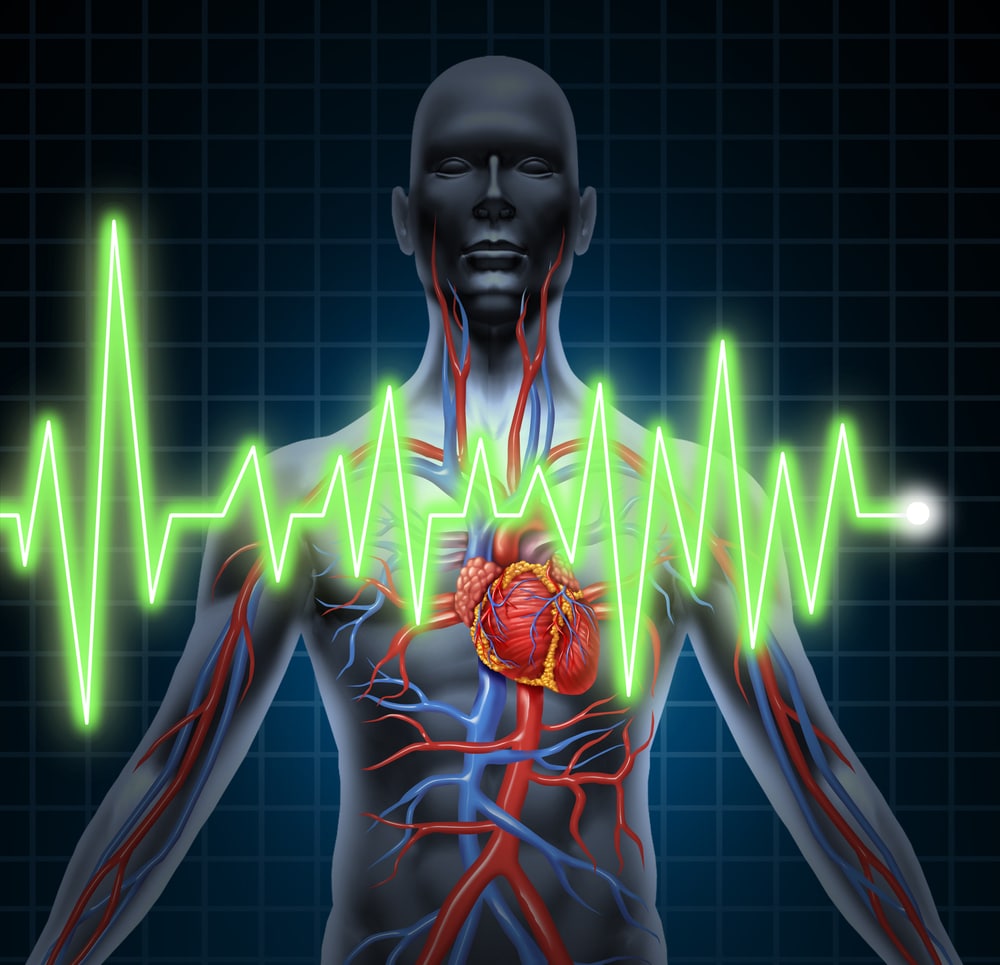Millions of Americans suffer from sleep disorders. And millions more suffer from poor sleep habits that make it hard to wake up in the morning. If you wake up feeling groggy and find yourself hitting your snooze button multiple times, small lifestyle changes can make mornings easier.
Here, we’ll show you how a few small changes in your daily routine, combined with a few healthy habits, can help improve your sleep. Learn how to wake yourself up in the morning with these tips and tricks, plus we’ll see what happens when you don’t get enough restful sleep.
How Poor Sleep Affects Your Health
It’s no secret that not getting enough sleep can be detrimental to health. If you’ve ever woken up feeling groggy and sleepy, you know how much harder it is to motivate yourself and to work on important projects. Not only does lack of sleep cause noticeable changes in mood, it can also be a sign of an underlying problem.
Here are the main causes of poor sleep:
- Sleep disorders, including sleep apnea and oversleeping
- Sleep deficiency, a condition where you don’t spend enough time in restful sleep phases, like deep sleep and REM sleep, resulting in poor quality sleep
- Sleep deprivation or not sleeping enough (the National Sleep Foundation recommends 7-9 hours for adults between the ages of 18 and 65 and 7-8 hours for adults over 65)
- Stress and anxiety
- Depression
- Certain medications, including beta-blockers, antidepressants, and muscle relaxants
- Chronic pain
- Medical conditions, including Parkinson’s and Restless Leg Syndrome
- Poor sleep habits or a poor sleep environment
If your grogginess in the morning is due to a sleep disorder, it’s a good idea to schedule an appointment with a doctor who specializes in sleep medicine. A doctor can conduct a sleep test to determine your sleeping habits and can determine whether an underlying medical condition is the culprit.
For most mild to moderate sleep problems, tracking your sleep with a wearable and making small lifestyle changes can improve mornings dramatically. Here, we’ll show you what signs to watch out for and how you can make waking up in the morning easier.
Symptoms of Poor Sleep
Not getting enough quality sleep can cause nightmares and sleepwalking that lead to groggy mornings. You may also feel excessive sleepiness throughout the day, not just in the mornings.
Other signs that you aren’t getting enough sleep include:
- Tired or heavy eyes
- Constant yawning
- Irritability
- Tiredness
- Brain fog
- Difficulty thinking or staying on task
Now that you know what to watch out for, read on to learn how to wake yourself up in the morning and how to get better quality sleep.
How To Wake Yourself Up
To wake up easier in the morning, you’ll need to make changes not only in the morning but also throughout the day and the night before. Fortunately, most of these changes are easy to master with a little practice. You won’t become a morning person overnight, but you will get better quality sleep and find that waking yourself up becomes easier and easier over time.
If your grogginess stems from a sleep disorder or a medical condition, you may need to combine the following lifestyle changes with medications. Talk to a doctor to get the best treatment plan if you have a sleep disorder or another medical condition.
Here are eight ways to make waking up in the morning a more enjoyable process.
1. Set a Sleep Schedule
Your body has a natural, built-in sleep cycle known as a circadian rhythm. A circadian rhythm — or your sleep-wake cycle — is a 24-hour subconscious clock that alternates between cycles of sleepiness and alertness. This process is controlled in a part of the brain known as the hypothalamus, but it can be affected by outside factors, including light conditions and noise.
Regular sleep habits help support your body’s natural circadian rhythm. Try going to bed and waking up at the same time each night and morning.
Start by identifying how much sleep you need. As mentioned above, this is typically 7-9 hours. Then work backward. Pick a time to go to bed that allows you to get the correct amount of sleep, wake up in the morning, and complete your regular routine before heading to work or starting your day. For example, you may choose to go to bed at 10 p.m. and wake up by 7 a.m. to get a full 9 hours of sleep.
Maintain your sleep schedule every day of the week, even on your days off. Over time, your body will get used to its regular sleep schedule, and you’ll start naturally waking up at the right time the next morning.
2. Eliminate Distractions Before Bed
Many people try to cram last-minute activities into their schedule before bed. Whether it’s a late-night gym session or working late on your computer, these activities can disrupt your circadian rhythm, making it harder to wake up in the morning.
Avoid drinking caffeine, energy drinks, and other stimulants in the late afternoon and evening. Limit alcoholic drinks close to bedtime, as these can also disrupt sleep. Try to go to the gym in the morning or during the day — during your lunch break for example — rather than in the evening.
Avoid staring at your phone screen or computer screen right before bed. The blue light from the screen can cause your circadian rhythm to think it’s daytime. Try to use your bed only at nighttime. Laying in bed during the day can also disrupt your natural sleep cycle.
If you have a hard time relaxing before bed, create a relaxing bedtime routine. Try doing some meditation or aromatherapy using essential oils. Diffusing lavender oil or drinking a cup of chamomile tea may help induce sleepiness.
3. Make It Harder To Hit Snooze
It can be tempting to hit the snooze button when you’re sleepy in the morning. Some people think that just a few more minutes of sleep will make you feel more rested. In reality, waking up and falling back asleep repeatedly — known as sleep fragmentation — can increase grogginess and increase feelings of pain.
Instead of putting your alarm right by your bed where you can hit snooze as much as you want, make it harder to hit the button. Try placing your alarm across the room so you have to get up to turn it off. This can help you avoid sleep fragmentation and the temptation to sleep in.
4. Use Light To Your Advantage
Natural light is one of the main signals affecting your circadian rhythm. When your body senses light, it triggers a subconscious response that indicates you should be alert. Waking up to daylight can help make mornings easier. Try sleeping with your curtains open so you wake up to natural sunlight or a bright light each morning.
If you live somewhere with street lights or other lights that can keep you up during the night, try using an alarm clock with a built-in light. Known as wake-up light alarm clocks, these clocks slowly turn on light in the morning to mimic the rising sun.
Take steps to ensure your sleep space is an ideal environment to get some shut-eye. The body sleeps best in dark, cool environments. Try using blackout curtains to block out outside lights that may disrupt sleep. If you tend to get cold, add a few extra blankets on the bed instead of cranking up the thermostat.
5. Try a Pick-Me-Up
Splashing your face with cold water in the morning or taking a cold shower can help shock your system into wakefulness. Additionally, cold temperatures can offer an energy boost that perks up your mind and body. If you don’t feel like taking a cold shower but live in a cool environment, you can step outside into the cold morning air to help wake up. Alternatively, try drinking a glass of cold water or going for a short walk first thing in the morning.
6. Get Proper Nutrition and Exercise
Eating a healthy diet and exercising regularly can help improve sleep. Processed foods and unhealthy snacks can cause fatigue and sluggishness. Instead, try to eat a balanced diet. A nutritionist can help you determine if your sleep problems are associated with your overall nutrition.
Exercise is another key component of sleep health. If you find yourself sleeping during the day, it can be harder to get a restful sleep at night. Try to exercise and stay active during daylight hours. This can give you energy during the day, while also making you more tired at night so you can go to sleep.
7. Track Your Sleep Habits
One of the best ways to improve sleep is to get an understanding of your existing sleep habits. Use a wearable tracker like Biostrap to help understand your sleep and activity habits. The sleep tool captures snoring, arm and leg movements, and biometric readings every two minutes. Review the information in the app to learn when and where you have sleep disruptions so you can make necessary changes to improve sleep.
8. Get Help
For some people, especially those with medical conditions, these lifestyle changes may not make waking up easier. In those cases, you may need medical intervention such as medications or devices to make sleeping and waking up easier.
If you have sleep apnea, you may need to use a breathing device to improve sleep. For people who suffer from other sleep disorders, medications, melatonin, and behavioral therapy may help. If you think your sleep disruptions are caused by underlying medical conditions, talk to a doctor to develop the best treatment plan.
Get a Good Night’s Sleep
Getting enough quality sleep can mean the difference between having high energy levels and feeling groggy in the morning and throughout the day. The solution isn’t just getting more sleep, it’s getting better sleep. Making small lifestyle changes can make falling asleep easier so you can wake up feeling refreshed and invigorated.
When it comes to how to wake yourself up, using light, eliminating bedtime distractions, and sticking to a schedule are vital to your success. Proper nutrition and regular exercise are also key components of the sleep health equation.
At Biostrap, we make it easy to track your sleep habits so you can make the changes you need and get better sleep. With accessories, including armband straps, and ankle straps, you can monitor your sleep cycles without causing discomfort. Use the app to track comprehensive sleep analytics and access in-depth data with the Sleep Lab tool.

























